For those that remember the insane Group B Rally days of the 1980s, the Audi Sport Quattro S1 rally car was easily one of the most memorable. With over 373kW and a kerb weight of around 1090kg, performance was (and still is) simply out of this world.
During the Australian launch of the Audi S1 Sportback quattro in Tasmania last week, Audi Australia treated us to a very special and very exclusive joy ride in a Sport Quattro S1 rally car. The car is the only known example in Australia and it’s been fully restored to Group B Rally specification.
This means power comes from a howling 2.1-litre heavily turbocharged five-cylinder engine which creates an iconic scream only interrupted by the chirping wastegate. Back in the days the engine was said to produce well over 373kW, and even as much as 500kW during qualifying and special stages.
For comparison, today’s World Rally Championship (WRC) cars use a 1.6-litre turbo four-cylinder producing 300hp (226kW). All teams are capped to 300hp, whereas in Group B, there were no power restrictions or drive type restrictions. You can imagine the sort of competition this created. Teams were coming up with all kinds of crazy ideas for their cars.
With no power and limited aero restrictions in place the Group B championship attracted huge crowds to each and every event around the world. It got to the point where there were so many spectators that things were quite dangerous. In fact, there were some fatalities. These contributed to a complete re-think and overhaul of the championship, and so Group B was put to an end.
The Audi was one of the most successful. Drivers included Hannu Mikkola, Stig Blomqvist, and Walter Rohrl. Rohrl ran an example of the rally car at the 1987 Pikes Peak International Hill Climb and won the overall event.
It’s difficult for us to explain the sensation and speed of the example we went in. The acceleration is mind-blowing and the all-wheel drive grip is incredible. And to think it used to be driven at breakneck speed through the bush and on slippery surfaces. It’s just insane.
We’ve put together a quick video of the hot laps for you. Check it out below. It certainly goes down as one of the most memorable motoring experiences we’ve ever had.
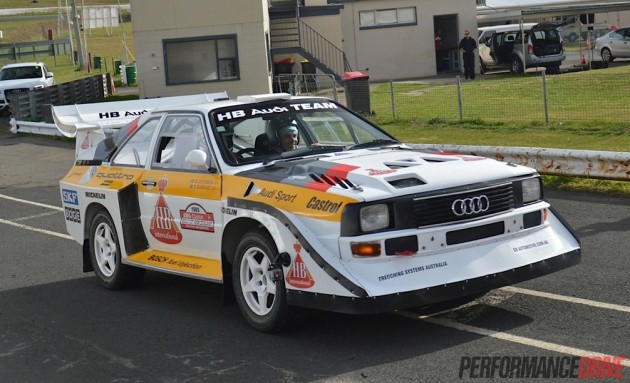
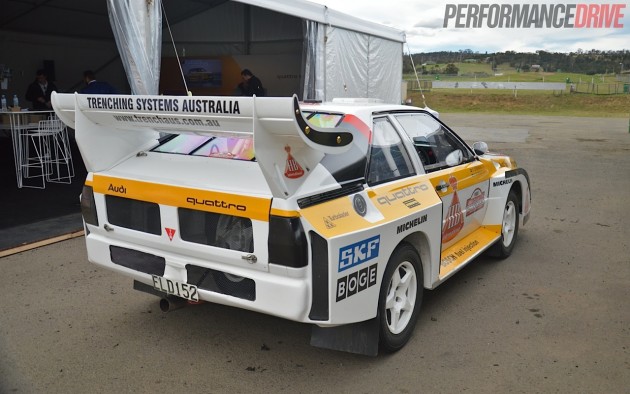
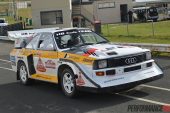

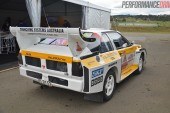
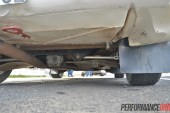
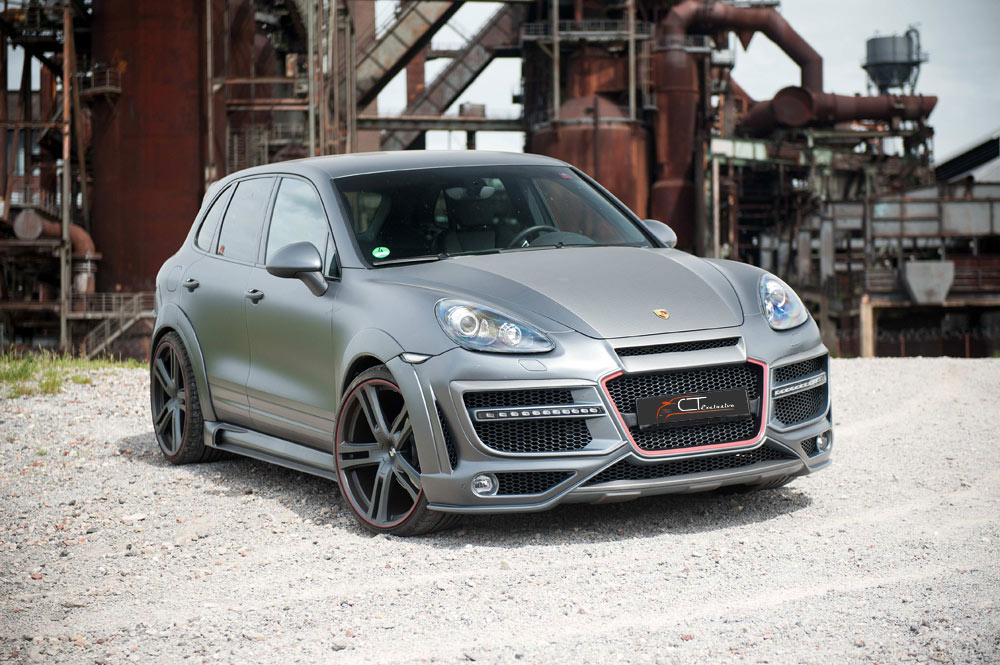
Awesome. Only it’s a shame that they haven’t been 100% faithful to the restore or build. Back in the day no Group B rally car ran a sequential pattern gearbox. Whilst I see he still has the manual clutch pedal installed they decided not to stick to the original H pattern transmission. I understand the sequential is faster and easier to use, H pattern is more authentic and adds to the drama and theatre of the driver working hard in the car. H pattern also requires more skill to drive. Check out Walter Rohrl using the H pattern in anger in the original S1.
Glad to see they also got the exhaust note as close to the original cars that ran in the day. So many “Newly refurbished or built S1’s go for hi-tech new style exhausts which somehow change the note slightly of the car and they don’t sound as good as the original (that Polish group who run a very fast S1 is the mob I’m talking about).
Good work. As for Poland we don’t have any S1 only Sport Quattro. Bob i think You were writing about Bulgarian Car from Prospeed.
The motor runs strange, low RPM I think, and this “fully restored to Group B Rally specification”, you know this is not true. The sequential gearbox is a no no in a Gr. B rally car!!!
As for the Bulgarian guy, his name is Nikolay Zlatkov (Prospeed), I think he has enough videos on youtube, but his S1 E2 is a replica, it’s not a real ex-works Quattro.
As for sequential transmission, well… you are not quite correct. There WAS a sequential 5-speed gearbox in S1 E2, tested by Walter Rohrl at the end of 1985, who even won a Semperit Rally with that car. To quote from Graham Robson’s book:
“Finally, towards the end of the season, the semi-automatic change for the four-wheel drive transmission, with five forward speeds, was ready. Walter Rohrl had carried out much testing, had recently won the Semperit rally with an E2 which was equipped with semi-automatic, and pronounced himself satisfied. The foot-operated clutch pedal was only needed for stage starts, and there was a pre-selector mechanism for the driver to think ahead of his requirements, and two clutches in a complicated assembly. This was reputedly 30 kg heavier than a normal manual transmission…
The fact was, however, that the semi-automatic transmission, tried by Walter Rohrl on the RAC Rally was put back into the box marked “work still needed”, for the 1986 Monte cars both used the robust and familiar six-speed manual transmision, though a Ferguson centre differential took place of the Torsen device used during 1985.”